Philip Richard Morris.
English ( b.1836 - d.1902 ).
The Cloaked Shepherdess.
Watercolour.
Signed Lower Left.
Image size 14 inches x 9.3 inches ( 35.5cm x 23.5cm ).
Frame size 26.3 inches x 20.3 inches ( 67cm x 51.5cm ).
This original painting is by Philip Richard Morris and dates from around 1890.
The watercolour is presented and supplied in its original ornate frame (which is shown in these photographs). The watercolour has been remounted around about 1990 by the previous owner.
This antique painting is in very good condition, commensurate with its age. It wants for nothing and is supplied ready to hang and display.
The watercolour is signed with his monogram lower left.
Philip Richard Morris was a successful British Victorian painter of genre and marine subjects.
Morris was born on 4th December 1836 at Devonport, Plymouth, Devon. He was the youngest of five sons of John Summons Morris and his wife, Anne Saunders. His father was an engineer and iron founder, and it was expected that Philip would enter the family business. When he was aged 14 his father took him to London where he was apprenticed accordingly. However, Philip began to be fascinated by the plates he saw in periodicals and became more and more interested in art. For five years he practised art in his spare time whilst doing manual work during the days. His talent was recognised though, and when William Holman Hunt intervened on his behalf his father eventually agreed that he should study art. Philip Morris then started drawing at the British Museum, and was admitted to the Royal Academy Schools in 1855. He was something of a star pupil there, winning silver medals for drawing, painting and portraiture. In 1858 he won a gold medal and travelling studentship for his painting “The Good Samaritan”. He used this to visit Italy and France, where he stayed until 1864.
In 1858 Morris submitted two paintings to the Royal Academy exhibition and, with only a few breaks, he continued to exhibit there until 1901. He also exhibited regularly at the Society of British Artists and, between 1877-1888, at the Grosvenor Gallery.
For his earliest works Philip Morris chose his subjects from the drama of the sea and the sailor’s life. It was his instinct for dramatic effectiveness and sentiment that made his art popular, both on the walls of exhibitions and in the form of engraved plates. The height of Morris’ success was in the 1860s and 1870s. Of Morris’ early paintings the best known are his seashore subjects, namely “Voices from the Sea” (1860), based on verses by Tennyson, “Drift Wreck from the Armada” (1867) and “The Sailor’s Wedding” (1876); the painting offered here is accordingly a recognised example of his superb work during this period.
Morris’s most popular work of all was “Sons of the Brave” (1880), which showed the orphaned boys of soldiers of the Chelsea Hospital, emerging into the street as a musical band, a painting noted by a contemporary critic to be full of character and ability.
Morris was a member of the Arts Club from 1875-1901 and had a studio in Arber House, Grove End Place, now 33 St John’s Road. He lived in various addresses in London. He was elected A.R.A. in 1877, but resigned this in 1900 due to ill health.
In 1878 Morris married a widow, Mrs Sargeantson, and they went on to have two sons and three daughters. Morris died on 22nd April 1902 at his home 92 Clifton Hill, Maida Vale, London and was buried at Kensal Green cemetery.
Today works by Philip Morris are held by the Blackburn Art Gallery, Leeds City Art Gallery, the Walker Art Gallery, Liverpool, Manchester City Art Galleries and Sunderland Museum.
This beautiful original watercolour painting by Philip Morris is well over a century old. It depicts a young shepherdess, holding her long wooden crock with both hands and staring into the distance with a look of serenity. She has blue-green eyes and auburn hair and wears a long blue cloak, with the hood pulled over her head. Behind her we see a church tower and a number of small buildings, indicating a small settlement. In the mid-ground there are half a dozen sheep, grazing on green pasture.
The style of this piece is very romantic, suggesting a nineteenth century pastoral idyll, guarded by a beautiful young shepherdess. It has a Pre-Raphaelite aesthetic and it befits the early Arts and Crafts movement.

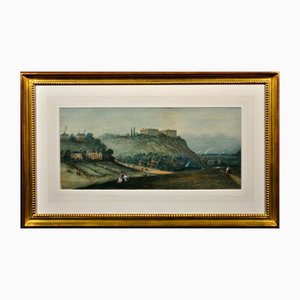
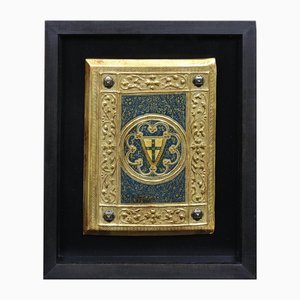


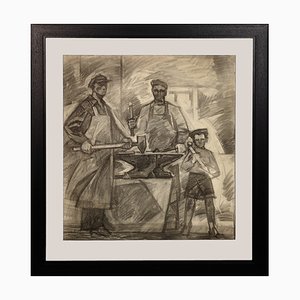


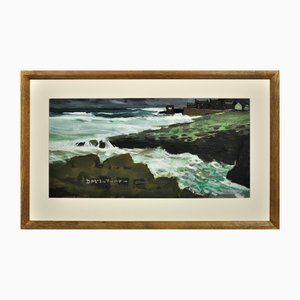




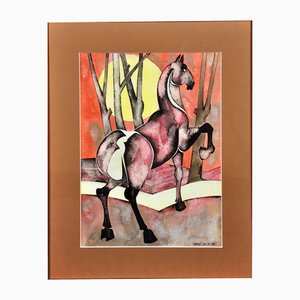


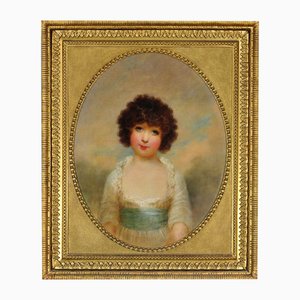
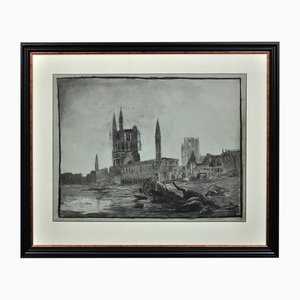
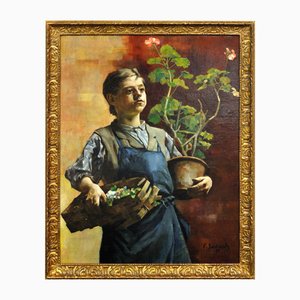
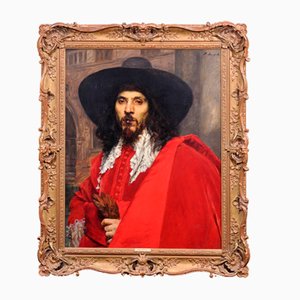
Get in Touch
Make An Offer
We noticed you are new to Pamono!
Please accept the Terms & Conditions and Privacy Policy
Get in Touch
Make An Offer
Almost There!
To follow your conversation on the platform, please complete the registration. To proceed with your offer on the platform, please complete the registration.Successful
Thanks for your inquiry, someone from our team will be in touch shortly
If you are a Design Professional, please apply here to get the benefits of the Pamono Trade Program